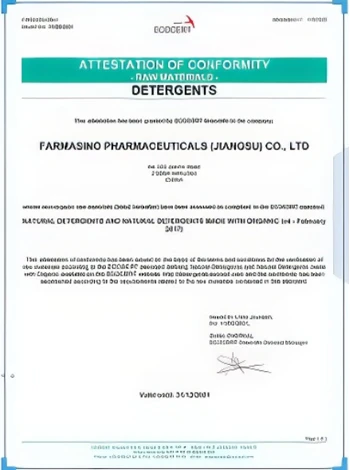



chlorine dioxide to drink
The Safety and Uses of Chlorine Dioxide in Drinking Water
Chlorine dioxide (ClO2) is a chemical compound widely recognized for its applications as a disinfectant and bleaching agent, particularly in water treatment processes. Its use in drinking water has garnered attention due to its effective antimicrobial properties, but it also raises important safety and regulatory considerations. This article aims to explore the benefits and risks associated with chlorine dioxide in drinking water.
Understanding Chlorine Dioxide
Chlorine dioxide is a yellowish-green gas at room temperature with a characteristic odor. It is a powerful oxidizing agent and is effective against a broad spectrum of pathogens, including bacteria, viruses, and protozoa. Because of these properties, chlorine dioxide is commonly used in municipal water treatment facilities to purify water and eliminate harmful microorganisms.
When chlorine dioxide is added to water, it reacts with various substances, including organic matter and pathogens, breaking them down and rendering them harmless. Its use in water treatment is advantageous because it produces fewer harmful byproducts compared to traditional chlorine disinfection methods.
Benefits of Chlorine Dioxide in Drinking Water
1. Effective Disinfection Chlorine dioxide is highly effective at inactivating a variety of pathogens, including those that can cause waterborne diseases such as giardiasis and cryptosporidiosis. This effectiveness is crucial for ensuring safe drinking water, especially in areas prone to microbial contamination.
2. Reduced Byproducts Unlike conventional chlorination, which can produce harmful disinfection byproducts (DBPs) like trihalomethanes, chlorine dioxide is less likely to form these byproducts. This is significant for public health since some DBPs are associated with long-term health risks.
3. Residual Disinfection Chlorine dioxide provides a residual antimicrobial effect, maintaining water quality even after it is treated. This is particularly useful in water distribution systems where pathogens may enter the water after treatment.
chlorine dioxide to drink

4. Taste and Odor In comparison to chlorine, chlorine dioxide leaves minimal taste and odor in treated water, which improves the overall drinking experience.
Safety Concerns and Regulatory Standards
Despite its benefits, the use of chlorine dioxide in drinking water is not without concerns. High concentrations of chlorine dioxide can be toxic to humans and animals. The U.S. Environmental Protection Agency (EPA) and other health authorities have established regulatory standards for its use in drinking water.
The EPA has set a maximum residual disinfectant level (MRDL) for chlorine dioxide at 0.8 parts per million (ppm) in drinking water. This limit is designed to protect public health while allowing water treatment facilities to take advantage of its disinfection properties. It is crucial that water utilities monitor chlorine dioxide levels carefully to ensure compliance with safety standards.
Additionally, improper use of chlorine dioxide, especially in non-regulated applications, can pose serious health risks. There have been instances of individuals consuming chlorine dioxide solutions marketed as miracle cures for various ailments, leading to serious health complications. It is vital to avoid consuming chlorine dioxide unless it has been properly administered in controlled, regulated environments.
Conclusion
Chlorine dioxide plays a significant role in ensuring the safety of drinking water through its efficient disinfection capabilities. Its advantages over traditional chlorination methods make it an appealing option for water treatment facilities. However, it is essential to remain aware of its potential risks and adhere to regulatory guidelines to ensure public safety.
In conclusion, while chlorine dioxide can effectively purify drinking water and provide long-lasting protection against pathogens, its use must be carefully managed to avoid health risks. Education and awareness about the proper use of chlorine dioxide in drinking water are crucial for both water suppliers and consumers. By understanding its benefits and limitations, we can appreciate chlorine dioxide's role in safeguarding public health and maintaining high-quality drinking water standards.
-
Why Sodium Persulfate Is Everywhere NowNewsJul.07,2025
-
Why Polyacrylamide Is in High DemandNewsJul.07,2025
-
Understanding Paint Chemicals and Their ApplicationsNewsJul.07,2025
-
Smart Use Of Mining ChemicalsNewsJul.07,2025
-
Practical Uses of Potassium MonopersulfateNewsJul.07,2025
-
Agrochemicals In Real FarmingNewsJul.07,2025
-
Sodium Chlorite Hot UsesNewsJul.01,2025










